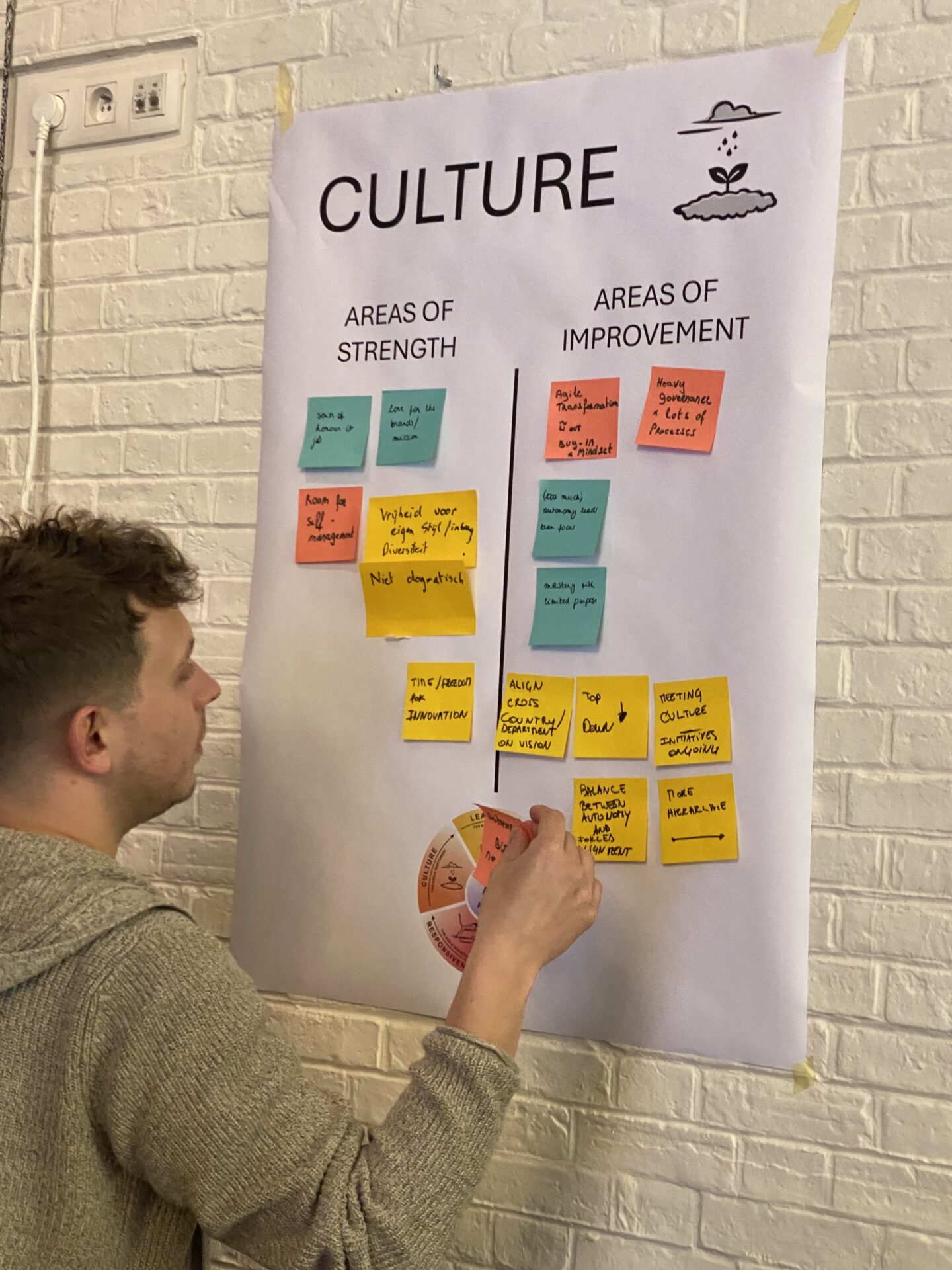In the ever-evolving landscape of modern business, agility is not merely a luxury but a necessity. And that’s exactly why our latest Agile Kitchen (29/04/2024) was all about Business Agility – focussing on how to shape your company’s road towards it using the CLEAR Model® of our guest lecturer and agile expert Giles Lindsay.
An intro to Business Agility and the CLEAR Model®
We kicked off with some sandwiches and networking as usual, followed by an insightful introduction to Business Agility and Giles Lindsay’s CLEAR Model to rethink your company’s agile processes. You can read all about it in his new book “Clearly Agile”.
Business agility, as discussed, refers to an organization’s ability to adapt swiftly and effectively to changes in market conditions, customer preferences, and technological advancements. It embodies flexibility, adaptability, and responsiveness, influencing various business aspects from decision-making processes to operational strategies.
Read more about Business Agility at our blog section
Lindsay went on to explain the CLEAR Model® he developed. This framework is designed to facilitate your company’s journey toward business agility and consists of five key components:
1. Culture: Establishing a culture of open communication, continuous learning, and diversity is crucial. It sets the foundational tone for a company-wide agile journey.
2. Leadership: Effective leadership inspires, engages, and empowers the entire organization through collaboration and shared ownership.
3. Execution: To have real agile impact, you need to go from strategic agility to concrete actions and tangible outcomes. It requires a balance between speed and quality, pushing the organization forward one sprint at a time.
4. Adaptability: Being an agile shape-shifter means having the capacity to transform structures and processes in anticipation of change. It’s not only about reacting to changes but anticipating them.
5. Responsiveness: This means acting swiftly yet purposeful, making informed decisions based on customer feedback and market trends.
To effectively use the CLEAR Model, you follow 5 steps:
- Assessment
- Strategy Development
- Implementation
- Monitoring and adjustment
- Integration
Because we only had 1.5 hours, we focussed on the first two steps.

Getting to work: assessment & brainstorming
As we want our Agile Kitchens to be interactive community events, we divided the attendees into 5 groups and got to work!
In the first exercise, participants had to assess their organization’s current state of business agility. Using post-its and markers, each group discussed 1 of the five pillars, noting down what requires improvement, the gaps and challenges and what is already done well.
In the second exercise, strategic approaches were discussed to leverage strengths and address the identified gaps. This culminated in a reflective discussion where each table shared insights, further enhancing the collective understanding of effective agility implementation for each of their organizations.


Reflections
As the event wrapped up, participants reflected on how the insights gained could be integrated within their organizations. It was clear that challenges such as resistance to change and the integration of new processes are difficult in every organization, and implementing real agile impact is not something that happens overnight. However, using the steps from the CLEAR Model, is one step closer to achieving Business Agility.
Having only a few hours, putting this model into practice was a challenge and just touched the surface of what is possible. But just like any other Agile Kitchen, connecting and networking with like-minded people proves to be valuable and interesting.
“I had the pleasure of speaking with several individuals from various industries, which demonstrated that the audience was not limited to external agile coaches, but was instead a diverse mix of participants.”
And once again, the importance of agility in today’s business environment is highlighted. Because as businesses around the globe strive to stay competitive, embracing business agility may well be the key to thriving in an unpredictable market.
Do you want to start or optimize your business agility, but you’re not sure where to start?


